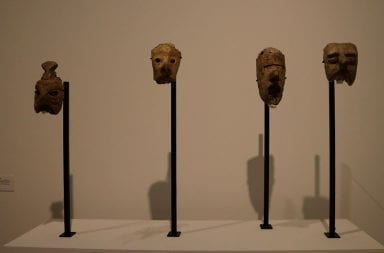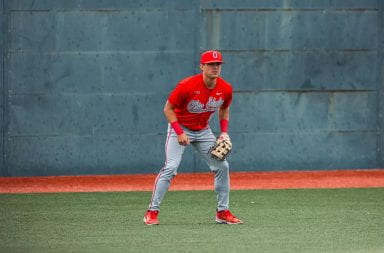Some adults with developmental disorders have found solace through gardening at Ohio State. A horticulture therapy program has connected students, volunteers and members of the Association for Developmentally Disabled since 2002.
Volunteers from OSU’s Chadwick Arboretum and Learning Gardens, participants from Community Connections program for developmentally challenged adults and OSU students garden together in areas around campus.
Jenny Pope, the volunteer and outreach education coordinator at Chadwick Arboretum and Learning Gardens, said the program started because of the need for volunteers to care for campus gardens.
“The group from ADD’s was more than happy to volunteer,” she said. “Staff from Chadwick also gave their time, and we’ve had students getting involved.”
Pope, who is a certified horticulture therapist, saw the involvement from the ADD’s community as a perfect opportunity to start a horticulture therapy program on campus.
“I didn’t want [ADD’s participants] to just volunteer. I wanted it to be meaningful for them,” Pope said. “Instead of just gardening, there’s a purpose behind everything they do.”
Pope said the goal of horticulture therapy is to help clients meet their developmental and learning goals through horticulture activities.
It is a great way to work with patients in a non-clinical manner, she said.
“In physical therapy, patients build hand coordination by squeezing a ball. Here they can develop the same skills, but instead they’re squeezing a gardening tool,” she said.
Ten weeks throughout the summer, 12 participants spend their Monday mornings gardening. They work for two hours, taking care of gardens in front of Howlett Hall. They grow flowers, vegetables and herbs, which they end up taking home, Pope said.
“So often our participants are being cared for and now they get to care for something else. They love seeing the end product of their hard work,” she said.
The objectives of the horticulture therapy program are straightforward: increase self esteem, strengthen social skills and teach gardening skills. The participants, whose disabilities vary, meet individual goals by learning at their own pace, she said.
The program has served more than 250 people and grows each season, as does the budget.
“We don’t charge for the program,” Pope said. “Technically we have no funding for our program.”
To raise money, participants paint terra cotta plants they call “community pots,” and plant them with flowers they have grown from the garden. They then sell the pots at Chadwick’s spring and fall plant sale, she said.
To date, $2,500 in donations and grants have kept the program running. Pope estimates it costs roughly $100 per session, mainly to purchase materials. Staff time is volunteer-based.
Pope has seen increased interest in the program from OSU students. Several have begun volunteering on a weekly basis.
“You don’t have to be an expert on horticulture,” said Benjamin White, a second-year in psychology. “Just being there and interacting with the clients is such a huge help.”
Pope said the program is a good opportunity for students to work with diverse populations; not only the ADD’s participants, but other volunteers. She hopes to see a class in horticulture therapy grow from the program.


